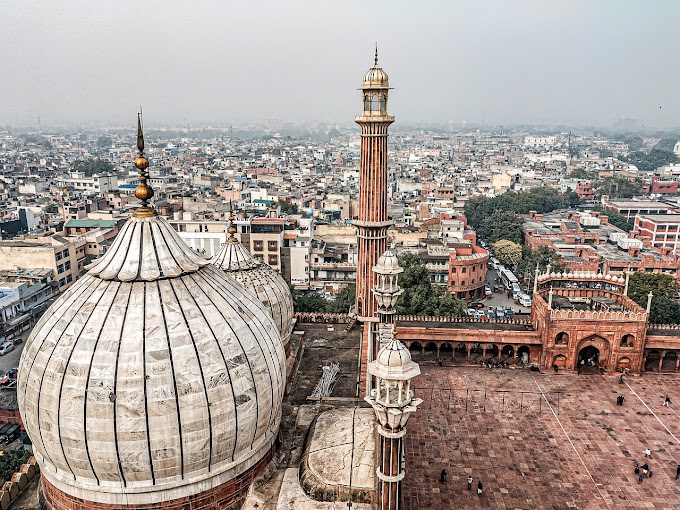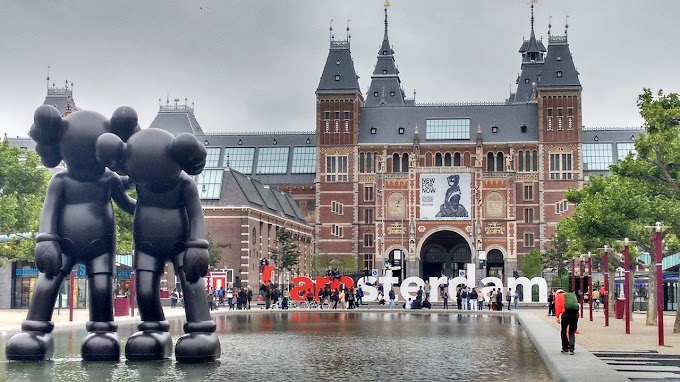Washington DC History:
·
Washington . DC . ,
The capital of the United States. It was founded after the American
Revolution by the first President George Washington .
·
Creating Washington . DC . ,
Influenced no less from Paris. Especially placing Capitol Hill into the
center of the road spread around. And building a large road is an
important core of the city
·
It has a public space as the center of
American political power and a gathering place for Americans to express
themselves politics
·
The McMillan Plan is a beautifully
successful public space development framework. It has been filled and
Washington . DC . , Became a symbol of political influence.
The coronavirus outbreak doesn't just
make us explore more of our own cities. But also makes us talk about the
history of other cities More as well.
For hundreds of years, many European
cities experienced catastrophes during the Plague Epidemic. Including the
prosperous trading city of Venice It was the birthplace of the world's
first quarantine in the 13th century and faced a decline as war brought the
plague to the city. (It's the round that I don't know) in the 17th
century.
At the same time, the economic impact
brings us back to exploring the city in response to the economic crisis. One
of those cities is inevitable New York. The Great Depression of the 1930s
Further, it is asking if any city
flourished when other cities were dire, and if it had, it would be inevitable
as the center of global political power like Washington, D.C.
No matter how powerful a city is For many of us,
Washington D.C. stops at the movie Forest Gump (1994)
and the rectangular pond that Jenny (the heroine) takes as a shortcut running
through the crowd to reach Forest (hero) who delivers a speech on stage.
This pond stretches between the Lincoln Memorial and the
Washington Monument (that pencil pole) and is part of an area called the
National Mall.
It's
not an air conditioned mall. But it could be called a promenade, or maybe
called a park. Because it is in charge of the American National Park
Service.
But
let's be honest, call it, according to Lisa Benton-Short, author of The National Mall: No Ordinary Public Space .
Yes, it's public space. But unlike other public spaces in the world
Even
if it is a public space with a questionable name But the origin of the
name of the National Mall is nothing complicated. Because the word mall is
not just for calling a shopping center
Back
in the 17th century, the term was used to refer to the promenade, often
tree-lined walkway. The name National Mall was borrowed from the popular London
promenade The Mall for. Former nobles dragged from Buckingham Palace to
Trafalgar Square. Ratchadamnoen Road of Bangkok Also influenced by
The Mall, the main feature of the promenade is a walkable place and is often
well-designed landscape architecture.
The shiny, reflective pond against the backdrop of the
Washington Monument is not just a fine architectural masterpiece. But
still meets the needs of being a symbol of power of this city flawlessly And
there should be a part that makes us still do not forget that scene in the
movie easily.
If
you enlarge the screen to see the entire national mall area. You will find
simple and symmetrical landscape architecture designs. At its core, the
broad promenade stretches three kilometers from the Lincoln Memorial to Capitol
Hill, home of the U.S. Capitol.
If you go back and explore the history We will find
that Washington D.C. is no different from a city like Shenzhen. In
the sense that it is a planned city, a city built on purpose from the
emptiness.
For
shenzhen The objective is to create a special economic area. For
Washington DC is the building of the political power center of the United
States. To call the public space the National Mall, it is a national mall
and a collection of symbols of national power.
15 years after declaring independence from Britain,
Washington, D.C. was inaugurated in 1791 by George Washington, the nation's
father and America's first president. The people who decided to select this
area along the Potomac River as the capital city. It is a piece of land
donated by the states of Maryland and Virginia to the District of Columbia that
is not affiliated with any state.
Colombia
comes from the official name of Columbus, the discoverer of the Americas. There
was even later information that both Irish, Vikings and Chinese may have
reached the continent before Columbus. But it cannot be denied that his
travels ultimately influenced the emergence of America.
Washington
building D.C. has French engineer and city planner Peter Charles L'Enfant
in charge. Needless to say, this city plan should have been influenced
quite a bit by Paris. Especially placing Capital Hill into the center of
the road scattered around. And building a grand avenue to be a central
axis of the city.
As planned by L'Enfant, the road will be 400 feet wide and 1
mile long, cutting from the western end of Capitol Hills to the Washington
Monument. The White House is to the north of the monument. These
three major structures line up perfectly in a triangular shape.
But
the city was not completed in a day and was not completed by one rigged person.
Not only L'Enfant was removed from the project. The more important issue
is the funds that make things slow.
Even
the Washington Monument took decades to build. But when it was completed
in 1884, it became the tallest man-made structure in the world. Before
being broken the record with the Eiffel Tower in no time.
And
even if the grand avenue that was drawn to fill Victorian buildings would never
have existed. But it later became an integral part of the National Mall. It
extends almost twice as long as planned.
It had to wait until 1902 for the importance of this area to
be brought up. Today, Americans remember it as the McMillan Plan.
In this plan, the center of the entire area will be at the
Washington Monument, with the grand avenue being transformed into a
300-foot-wide lawn as the centerpiece. Stretched by the trees And
neoclassical buildings that are mostly used as museums and other cultural
sites, led by the Smithsonian, a museum that could be said to be America's most
important. It became a complex, a large museum consisting of 11 buildings
with 10 million visitors each year.
The
pond and the Lincoln Memorial were also built after the Macmillan Plan.
It
goes without saying that the McMillan plan is a very successful framework for
the development of this public space. It was fulfilled and made to
Washington. D.C. became a powerful political symbol.
Over the past hundred years, the National Mall has become
the center of America's memories. Part of it is a monument that is built
continuously. In honor of many great presidents, from Thomas Jefferson,
Abraham Lincoln, Franklin D.Roosevelt to Martin Luther King, Jr., and to honor
the soldiers who fought in the war. Both World War, Korean War and Vietnam
War And as a gathering place for Americans to express themselves
politically Whether that is for witnessing the oath of the president one
after the other or the protest
Outside of Washington D.C. was not built in one day. The
times when cities are expanding significantly are often times when the United
States faces hardships. That's because it is the time of the federal
government's lavish spending.
Since its founding at the end of a century earlier than
Washington DC's population had reached hundreds of thousands, it had to wait
until the 1870 census, post-Civil War. The increase in the population is
due to the expansion of the central government using more workers. Including
a wave of former slaves who immigrated to the city That was both a center
for the slavery in America and against the slavery during the Civil War.
From
the civil war Washington population D.C. expands again in the 1930s
as a result of President Roosevelt's New Deal budget spending. To fight
the Great Depression Part of the budget is used for the construction of
government buildings, monuments, and museums. Most of them are in the
National Mall area.
At the time of the city's peak population was the 1950
census, where the population hit 800,000 as a result of the increased federal
employment during World War II, which gradually declined to less than 600,000.
In the year 2000, the current population of Washington DC is about 700,000
people and the last museum. Is the National Museum of African American
History and Culture It is the work of the famous British architect David
Adjaye. That just opened in 2016
Today,
the US federal government is spending huge budgets to combat the effects of the
virus outbreak. It's a time to watch whether this crisis booming city will
grow significantly again or not. And does the economic stimulus through
government spending still have to be in the form of old construction projects?















0 Comments